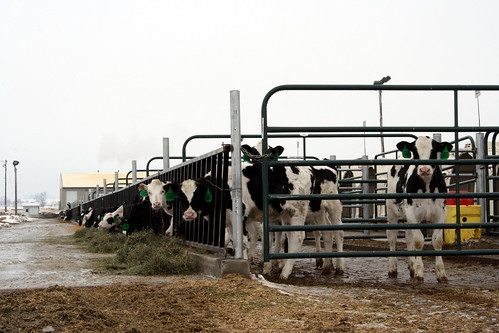
The escalation in prices for energy from fossil fuel has set the stage for the domestic production of renewable energy as a national priority. Not only can the production of renewable energy reduce fossil fuel dependence, but it has the potential to create quality American jobs, combat global warming, and lay a strong foundation for a robust rural economy. This point was not only emphasized in President Obama’s State of the Union address in January, but again upon the President’s recent visit to two Manitowoc, Wisconsin, businesses; showcasing them as leaders in solar power and energy-efficient technology.
Manitowoc is not the only place in Wisconsin that is leading the way in renewable energy and energy efficient systems. Just to the north, in Kewaunee County, they, too, are on the cutting edge of the renewable energy race.
Kewaunee County is home to 20,300 residents and agriculture is the third leading employer for county residents; has become a forerunner, a model, in the generation and use of renewable energy on a large scale within the last seven years.
Today, there are two anaerobic digesters, both on cattle dairy farms, and three wind farms in operation throughout Kewaunee County. Collectively, these systems generate enough power to support and sustain 8,000 households. With a total of 8,900 households located in the entire county, renewable energy is powering Kewaunee County, Wis.
The revolution began in 1999 when both Wisconsin Public Service (WPS) and Madison Gas and Electric (MG&E) constructed winds farms in Kewaunee County. Then in 2003, John Pagel of Pagel’s Ponderosa Dairy, LLC was awarded a renewable energy grant from USDA Rural Development for the purchase and installation of an anaerobic digester. That anaerobic digester takes mainly livestock manure, and processes that waste into energy. Pagel Ponderosa, the largest dairy farm in the state at 4,200 head of cattle and the largest employer in the area, generates enough energy to power more than 800 homes.
One year later, Pagel’s partner and co-owner of Dairy Dreams, LLC, Don Niles, was also approved for a USDA grant. Grant funds were again used for the purchase and installation of an anaerobic digester on the Dairy Dreams Farm. Dairy Dreams is a 2,800 head dairy farm located in Casco, Wis. With the addition of this new digester that started production late in 2010, Dairy Dreams generates enough green energy to power 600 homes in Kewaunee County, producing approximately 780 kilowatts an hour.
Anaerobic Digesters process and ultimately produce energy from livestock manure. In addition to the production of energy, solid byproducts of the system are dried and used on the farm as livestock bedding material, and liquid byproducts are used as high-quality organic fertilizer in place of chemical fertilizers.
“The decision for the digesters was an easy one for us,” said Niles. “As a nation we saw that we’re becoming more dependent on foreign oil, and we were concerned with fuel being available locally. Looking all around us we had a renewable resource available. This was the right thing to do for both the nation and our neighbors.”
The green energy produced by the digesters is ultimately sold back to the grid at WPS, helping to lower energy costs for area residents throughout the county.
“Not only is this good for energy independence, but we do try to be mindful of our neighbors and area residents. The anaerobic digesters allow us to use a high quality organic fertilizer that is produced right here, generated directly from the digester and the energy producing processes, helping us to eliminate odor problems and the need to spread liquid waste,” added Niles. “We are a blue collar and agricultural county, we pride ourselves on the many ways that we are self-sufficient, and this is just another means of supporting ourselves and our neighbors.”
Partners on these projects include GHD, Inc. in Chilton, Wis., Focus on Energy, and Wisconsin Public Service.
USDA supports deployment of anaerobic digesters through Rural Development, Farm Service Agency and NRCS programs. To find out how to fund renewable energy projects for your farm or business click here.


